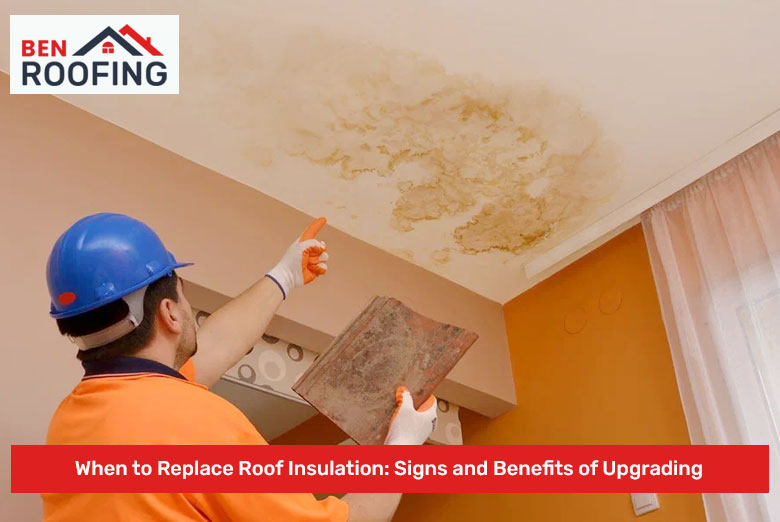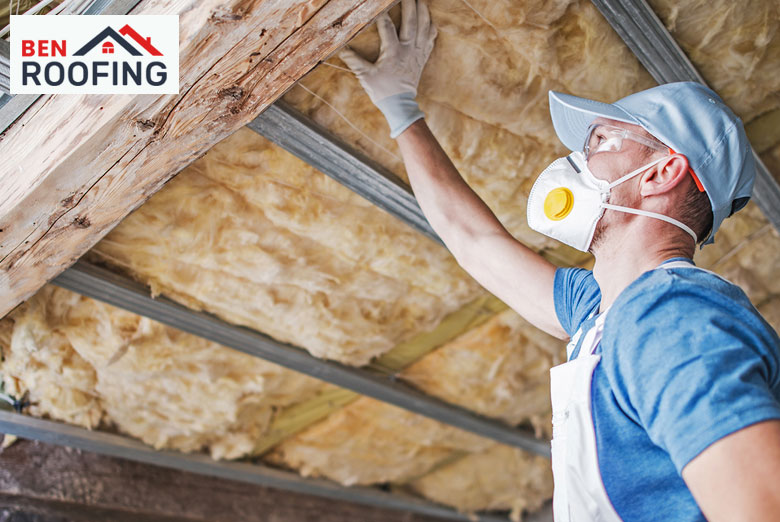When to Replace Roof Insulation: Signs and Benefits of Upgrading
Our homes keep us safe and warm. Just like we wear a coat in winter, our houses have a special blanket called insulation. This blanket sits in the roof and keeps the heat inside during cold weather and outside when it is hot. This helps us stay comfortable all year round. However, sometimes this blanket gets old or damaged. Then, it cannot do its job properly. So, we need to check it regularly. If we see some problems, we must change the insulation. Therefore, knowing when to replace roof insulation is very important for every homeowner. Now, let’s learn about some clear signs that tell us it’s time for new roof insulation. Also, we will explore the great things that happen when we upgrade it.
Signs to Replace Roof Insulation
Here are signs that show you need new roof insulation:
1. High Energy Bills
First, think about your energy bills. Do they seem very high, especially in the winter and summer? If your heating and cooling systems work extra hard, it means something is wrong. Perhaps, the insulation is not working well. Consequently, the heat escapes in winter, and enters in summer. This makes your systems work harder. Therefore, you see a big jump in your energy bills. For instance, if your bills are much higher than your neighbors, you should check your roof insulation.
Furthermore, high energy bills can mean your insulation has become less effective. As a result, your heating and cooling systems have to work harder to maintain a comfortable temperature. For example, if you constantly adjust your thermostat but still feel too hot or cold, your insulation might be the problem. In addition, you might notice that your air conditioner or heater runs for longer periods than usual.
2. Uneven Temperatures in the House
Secondly, notice the temperature in different rooms. Is one room very hot and another very cold? This means the insulation is not spread evenly. Thus, some parts of your house lose more heat or gain more heat than others. For example, the rooms under the roof often feel much hotter in the summer. Also, they feel colder in the winter.
Additionally, uneven temperatures can make your home uncomfortable. Therefore, you might find yourself constantly adjusting the thermostat. For instance, you might turn up the heat in one room, only to find another room becomes too hot. Furthermore, this also puts extra strain on your heating and cooling systems.
3. Drafts and Cold Spots
Third, feel for drafts and cold spots. Do you feel a cold breeze near the ceiling or walls, especially on windy days? This means air is leaking in or out. Thus, your insulation is not sealing the house properly. For example, you might feel a draft near the edges of the ceiling or around light fixtures.
Also, cold spots on the ceiling or walls can indicate areas where insulation is missing or damaged. As a result, these areas lose heat more quickly. For instance, you might notice a cold patch on the ceiling during the winter. Furthermore, these drafts and cold spots make it difficult to keep your home warm and cozy.
4. Water Stains on Ceilings or Walls
Fourth, look for water stains. Do you see brown or yellow spots on your ceiling or walls? This means there is a leak in your roof. Then, the water damages the insulation. Thus, it cannot work properly. For example, you might see water stains after heavy rain or snow.
Additionally, water damage can seriously compromise the effectiveness of insulation. Therefore, wet insulation becomes heavy and matted. For instance, it loses its ability to prevent heat transfer. Furthermore, mold can grow in wet insulation, creating health problems.
5. Visible Signs of Damage to Insulation
Fifth, check the insulation itself. Can you see it in your attic or crawl space? Does it look old, wet, or damaged? If it’s sagging, clumping, or has dark spots, it needs to be replaced. For example, you might see animal droppings or nests in the insulation.
Also, damaged insulation can significantly reduce its effectiveness. Therefore, it won’t protect your home from temperature changes. For instance, if the insulation is compressed or matted, it loses its insulating properties. Moreover, pests can damage insulation by nesting in it or tearing it apart.
Benefits of Upgrading roof insulation
Here are few good things that happen when you get new roof insulation:
1. Lower Energy Bills
Firstly, you will save money on energy bills. New roof insulation keeps your house warmer in winter and cooler in summer. Thus, your heating and cooling systems don’t have to work as hard. For example, you might notice a significant decrease in your monthly energy costs.
Furthermore, efficient insulation reduces energy waste. Therefore, you use less energy to maintain a comfortable temperature. For instance, you won’t have to keep turning up the heat or turning down the air conditioning. Moreover, this saves you money and helps the environment.
2. Increased Comfort
Secondly, your house will be more comfortable. New insulation keeps the temperature even throughout your home. Thus, no more hot or cold spots. For example, you can enjoy a consistent temperature in every room.
Also, improved insulation reduces drafts and cold spots. Therefore, you feel warmer in winter and cooler in summer. For instance, you won’t feel a chilly breeze near the windows or ceiling. Moreover, this creates a more pleasant living environment.
3. Reduced Noise
Thirdly, new insulation can make your house quieter. It blocks outside noise. Thus, you hear less traffic or neighbor noise. For example, you might notice a significant reduction in noise from outside.
Moreover, insulation absorbs sound waves. Therefore, it creates a quieter indoor environment. For instance, you won’t hear as much noise from other rooms in the house. Furthermore, this creates a more peaceful and relaxing atmosphere.

4. Improved Air Quality
Fourthly, new insulation can improve the air you breathe. It prevents dust and pollutants from entering your home. Thus, you have cleaner air inside. For example, you might notice less dust accumulating in your home.
Also, proper insulation helps prevent moisture buildup. Therefore, it reduces the risk of mold growth. For instance, you won’t have to worry about musty smells or mold spores in the air. Furthermore, this creates a healthier living environment, especially for people with allergies or asthma.
5. Increased Home Value
Fifthly, new insulation can make your house worth more money. Buyers like homes with good insulation. Thus, it’s a good selling point. For example, you can advertise your home as energy-efficient.
Also, energy-efficient homes are more attractive to potential buyers. Therefore, they are often willing to pay more. For instance, you can highlight the lower energy bills as a benefit. Furthermore, this can give you a competitive edge in the real estate market.
